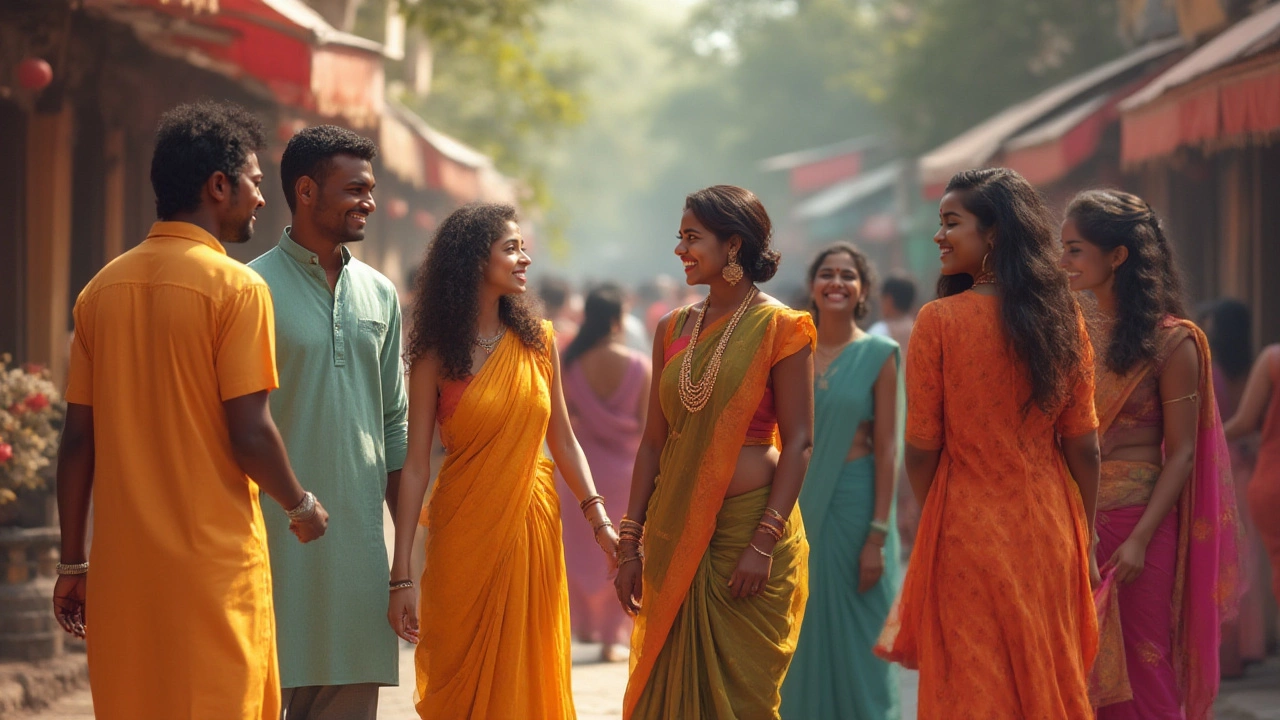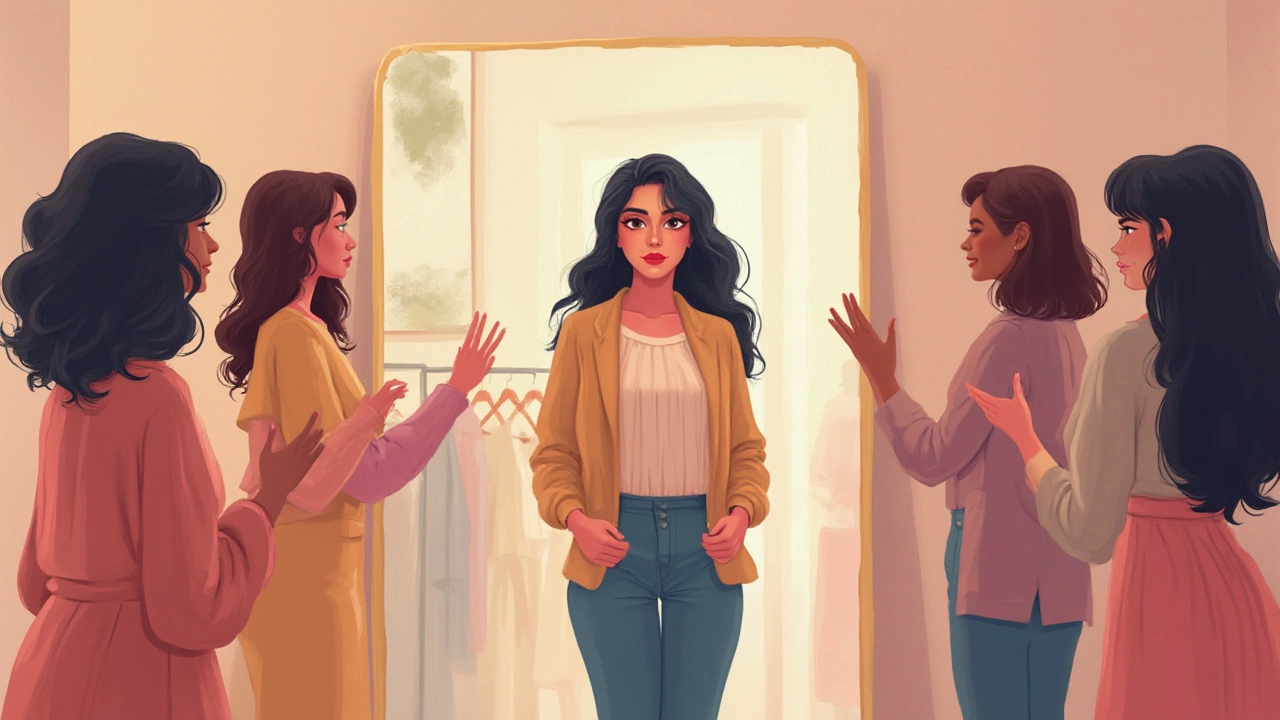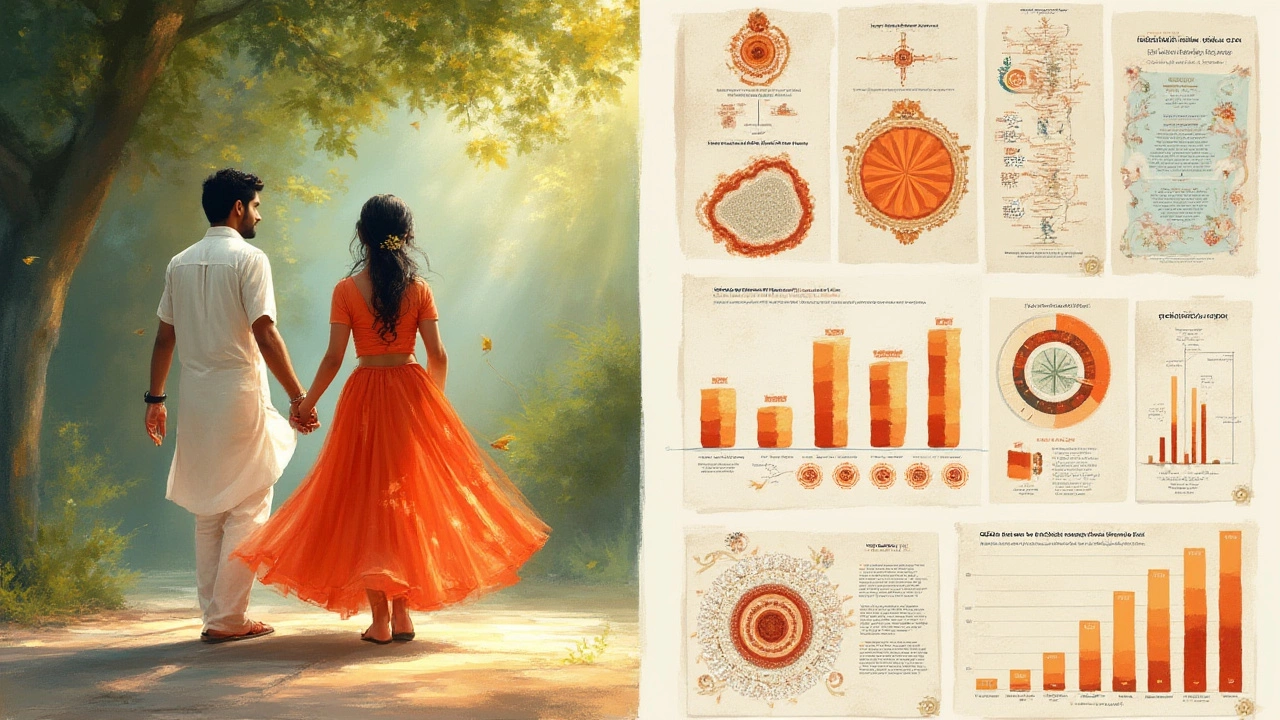What Dress Size Do Men Find Most Attractive? Surprising Truths Revealed

You’ve probably wondered if there’s some magical dress size that men are secretly drawn to. Turns out, this question pops up everywhere, from late-night conversations to awkward dinner parties. Magazines toss out guesses, but the real answer is way more layered than “size 6 is best.” Here’s a wild fact: in a global study by YouGov, men’s opinions on an ideal female figure were all over the map—and the most preferred sizes varied by country, age, and cultural background. Now more than ever, with body positivity front and center, people are challenging ancient stereotypes. So why are we still obsessed with ‘the perfect size’?
What Science and Culture Actually Say About Dress Size Preferences
The buzz around dress sizes isn’t new. Fashion houses once favored ultra-thin models, usually size 0 or 2. That standard bled into what people assumed men wanted. But when researchers actually ask men, the answers are rarely what magazines suggest. In a landmark study led by Devendra Singh back in the 1990s, men and women rated various silhouettes. The most attractive women, according to men, were closer to sizes 8-10 and had a waist-to-hip ratio of about 0.7—not the willowy figures you see on runways. Singh’s study is still quoted today because it nailed down that hourglass shape mattered more than raw size numbers.
Dig a bit deeper and you see how culture twists things. In Brazil, for example, curvier figures are often celebrated, while in Japan, petite sizes are more sought after. There’s no universal dress size that’s king everywhere. A 2015 survey done in the UK showed the majority of men actually preferred women wearing UK size 12-14 (US size 8-10) over the size 0 look. On American dating sites, profiles with current US dress sizes 6-10 tend to attract the most likes and responses, based on aggregated site data from Zoosk and Tinder. Meanwhile, in Hollywood, the pressure leans toward smaller sizes because of red carpet sample sizes—but average women in the US are between sizes 14 to 16 based on real retail sales.
Dress size and attractiveness get tangled up in cultural fads and marketing, but studies point to the same thing: there’s no single perfect size. The table below highlights some key data points from various research projects and surveys:
| Study/Source | Sample | Preferred Dress Size | Notes |
|---|---|---|---|
| Singh (1993) | 500 men, USA | 8-10 | Waist-hip ratio 0.7 most attractive |
| YouGov 2023 | Global | Varies—8-12 US | Larger in Latin America |
| UK Survey 2015 | 1000 men | 12-14 UK (8-10 US) | Among British men |
| Zoosk Dating Data 2021 | USA | 6-10 | Highest match rate |
Now, does this mean you should aim for a specific dress size? Not necessarily. Men’s preferences are shaped by so many moving pieces—culture, upbringing, personal taste, media. And like my cat Whiskers, humans are hopelessly unpredictable. Even if a guy says he loves size 8, he might fall head over heels for someone size 14. Attraction just doesn’t slot so neatly into numbers on a label.
“Physical attractiveness is shockingly subjective, influenced as much by culture and personality as by body metrics.” — Dr. Joan Chrisler, psychology professor at Connecticut College
Here’s where it gets interesting: Brands are finally catching up, showcasing a wider range of models. Huge players like ASOS and Savage X Fenty now bank on inclusivity, and pieces sell out in all sizes. Social media led this charge, too—you’ll spot everyone from size 4s to 20s with devoted followings, and men follow these creators in droves. Research shows exposure to diverse body types actually increases acceptance and attraction. The pressure to fit a mold? It’s crumbling, slowly but surely.

Why Dress Size Is a Terrible Predictor of Attractiveness
Chasing the “right” dress size can wreck your confidence. First off, sizes themselves are a mess. Did you know a woman’s size 8 from one shop could fit like a 12 in another? There’s no global standard, just a patchwork of measurements and ego-driven marketing. Fashion historian April Calahan found that American dress sizes have “vanity shifted” downward over decades. What grandma called a 12 is often today’s 8, and that causes endless confusion and insecurity.
The numbers on a label don’t know what makes you shine. Dress size ignores your posture, the way you walk into a room, or how you laugh at awkward jokes. Men (and everyone else) notice health, happiness, and effortless style far more than digits on your clothing tag. An experiment by the University of New South Wales asked male volunteers to rate women in identical outfits, but with different sized tags shown. Attractiveness scores didn’t budge – men couldn’t care less about the number; they focused on how the clothes fit and flattered the body.
Plus, different body types play a role. Hourglass, athletic, tall, petite—each brings something unique that numbers ignore. For instance, a 5’10” woman who wears a size 10 looks completely different than a 5’2” woman in the same size. Style coaches suggest you focus less on a target number and more on proportion and fit. When women wear dresses that highlight their natural shape—like wrap dresses or A-line cuts—attractiveness ratings leap up in blind studies. The real trick is figuring out what works for you, not what’s on trend.
It’s easy to lose perspective when every magazine flashes “slim down for wedding season!” or “get your pre-baby body back.” But studies out of Drexel University show that women who ignore size pressure and dress for comfort and personality score higher in self-rated attractiveness and are more likely to receive compliments. Bottom line? The “best” size is what feels best on you.

Tips for Feeling and Looking Awesome—Whatever Your Dress Size
Forget the so-called ‘ideal’ dress size, because it truly changes with trends, country, and personal taste. Still, if you want to flatter your shape and feel confident, some simple tips can go a long way. Start with fabric and fit: Soft, structured fabrics like ponte knit, crepe, and high-quality cotton tend to hug curves in the right way. Pleats, ruching, and belt details flatter just about everyone if you’re feeling bold. If you have no idea where to start, styling pros recommend trying these classic moves:
- Emphasize your waist, either with belts or strategic seams.
- If you’re busty, V-necks and wrap styles balance outfits.
- Pear-shaped? A-line dresses naturally skim hips without cling.
- Tall or athletic? Dresses with bold prints and color-blocking add dimension.
- Petite? Go for above-the-knee cuts and minimal extra fabric for a longer look.
Don’t be shy about color. Studies find men are drawn to red and jewel tones, but you should wear what makes you feel energized. Personal touches—like a killer pair of boots, signature earrings, or a fun hairstyle—matter more for memory and attraction than you’d expect. People (yep, even most men) say confidence is the number one thing that catches their eye. If you walk into a room feeling good in your dress—whether it’s size 6 or 16—you’ll get noticed.
And if you’re worried about what guys might think? Ask yourself if you’d want to spend time with someone who only talks about your size. That’s like my cat Whiskers picking friends just by the size of their treat bag—not exactly a recipe for lasting love. Research from eHarmony and OkCupid, two dating giants, shows drawn-out relationships start because of connection, shared interests, and personality, not measurements. Unique style overrules size in the long game.
So next time you question your place on the size chart, remember: fashion trends come and go, but self-acceptance makes anything look attractive. Men’s preferences vary, yes, but the key is truly rocking what suits your figure, taste, and mood. Want some wardrobe inspiration? Follow body-positive influencers who style dresses across all sizes—this does wonders for your own confidence. Clothes should be fun, not stressful. The best-looking dress is the one that lets you forget about the number and live your life out loud.
- Jul, 17 2025
- Violet Greenfield
- 0
- Permalink
Written by Violet Greenfield
View all posts by: Violet Greenfield